Doina Caragea
Predictive Modeling and Explainable AI for Veterinary Safety Profiles, Residue Assessment, and Health Outcomes Using Real-World Data and Physicochemical Properties
Oct 01, 2025Abstract:The safe use of pharmaceuticals in food-producing animals is vital to protect animal welfare and human food safety. Adverse events (AEs) may signal unexpected pharmacokinetic or toxicokinetic effects, increasing the risk of violative residues in the food chain. This study introduces a predictive framework for classifying outcomes (Death vs. Recovery) using ~1.28 million reports (1987-2025 Q1) from the U.S. FDA's OpenFDA Center for Veterinary Medicine. A preprocessing pipeline merged relational tables and standardized AEs through VeDDRA ontologies. Data were normalized, missing values imputed, and high-cardinality features reduced; physicochemical drug properties were integrated to capture chemical-residue links. We evaluated supervised models, including Random Forest, CatBoost, XGBoost, ExcelFormer, and large language models (Gemma 3-27B, Phi 3-12B). Class imbalance was addressed, such as undersampling and oversampling, with a focus on prioritizing recall for fatal outcomes. Ensemble methods(Voting, Stacking) and CatBoost performed best, achieving precision, recall, and F1-scores of 0.95. Incorporating Average Uncertainty Margin (AUM)-based pseudo-labeling of uncertain cases improved minority-class detection, particularly in ExcelFormer and XGBoost. Interpretability via SHAP identified biologically plausible predictors, including lung, heart, and bronchial disorders, animal demographics, and drug physicochemical properties. These features were strongly linked to fatal outcomes. Overall, the framework shows that combining rigorous data engineering, advanced machine learning, and explainable AI enables accurate, interpretable predictions of veterinary safety outcomes. The approach supports FARAD's mission by enabling early detection of high-risk drug-event profiles, strengthening residue risk assessment, and informing regulatory and clinical decision-making.
A MISMATCHED Benchmark for Scientific Natural Language Inference
Jun 05, 2025Abstract:Scientific Natural Language Inference (NLI) is the task of predicting the semantic relation between a pair of sentences extracted from research articles. Existing datasets for this task are derived from various computer science (CS) domains, whereas non-CS domains are completely ignored. In this paper, we introduce a novel evaluation benchmark for scientific NLI, called MISMATCHED. The new MISMATCHED benchmark covers three non-CS domains-PSYCHOLOGY, ENGINEERING, and PUBLIC HEALTH, and contains 2,700 human annotated sentence pairs. We establish strong baselines on MISMATCHED using both Pre-trained Small Language Models (SLMs) and Large Language Models (LLMs). Our best performing baseline shows a Macro F1 of only 78.17% illustrating the substantial headroom for future improvements. In addition to introducing the MISMATCHED benchmark, we show that incorporating sentence pairs having an implicit scientific NLI relation between them in model training improves their performance on scientific NLI. We make our dataset and code publicly available on GitHub.
CrisisMatch: Semi-Supervised Few-Shot Learning for Fine-Grained Disaster Tweet Classification
Oct 23, 2023



Abstract:The shared real-time information about natural disasters on social media platforms like Twitter and Facebook plays a critical role in informing volunteers, emergency managers, and response organizations. However, supervised learning models for monitoring disaster events require large amounts of annotated data, making them unrealistic for real-time use in disaster events. To address this challenge, we present a fine-grained disaster tweet classification model under the semi-supervised, few-shot learning setting where only a small number of annotated data is required. Our model, CrisisMatch, effectively classifies tweets into fine-grained classes of interest using few labeled data and large amounts of unlabeled data, mimicking the early stage of a disaster. Through integrating effective semi-supervised learning ideas and incorporating TextMixUp, CrisisMatch achieves performance improvement on two disaster datasets of 11.2\% on average. Further analyses are also provided for the influence of the number of labeled data and out-of-domain results.
Identification of Fine-Grained Location Mentions in Crisis Tweets
Nov 11, 2021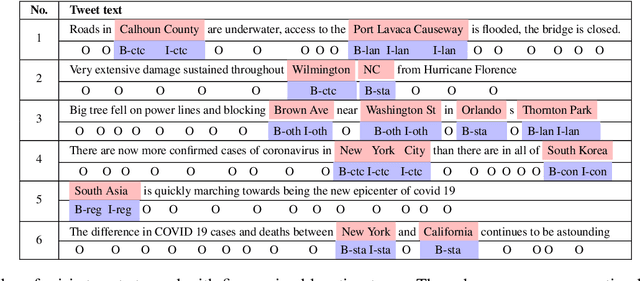


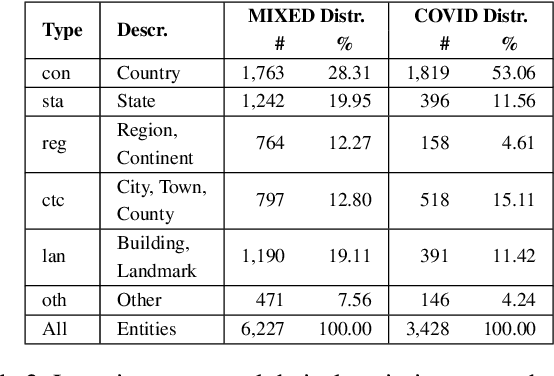
Abstract:Identification of fine-grained location mentions in crisis tweets is central in transforming situational awareness information extracted from social media into actionable information. Most prior works have focused on identifying generic locations, without considering their specific types. To facilitate progress on the fine-grained location identification task, we assemble two tweet crisis datasets and manually annotate them with specific location types. The first dataset contains tweets from a mixed set of crisis events, while the second dataset contains tweets from the global COVID-19 pandemic. We investigate the performance of state-of-the-art deep learning models for sequence tagging on these datasets, in both in-domain and cross-domain settings.
On Identifying Hashtags in Disaster Twitter Data
Jan 05, 2020
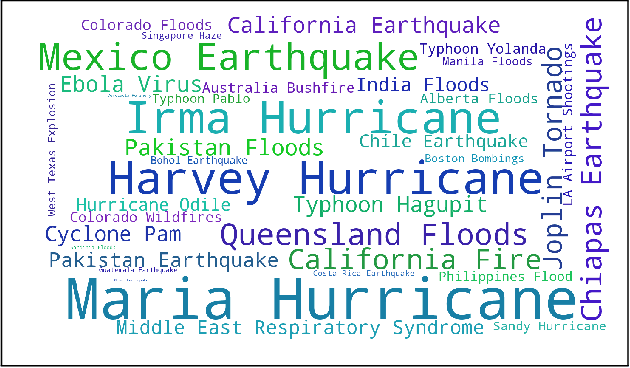
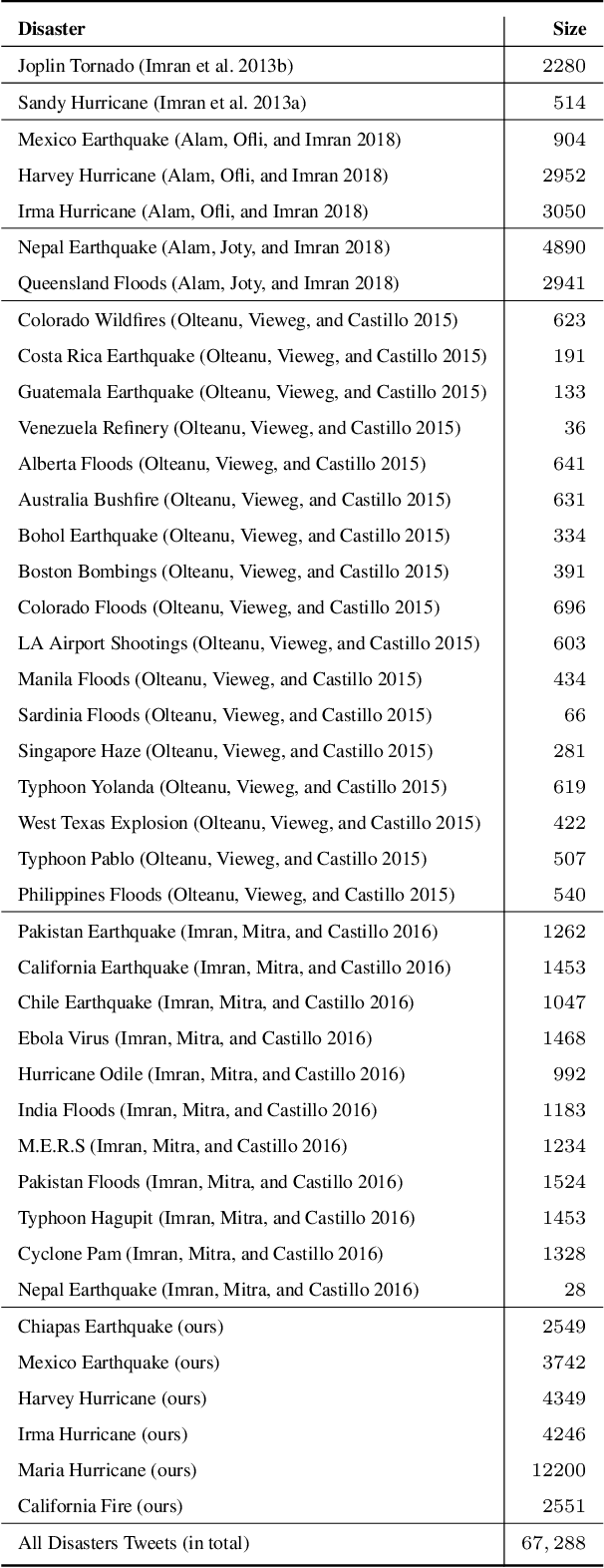

Abstract:Tweet hashtags have the potential to improve the search for information during disaster events. However, there is a large number of disaster-related tweets that do not have any user-provided hashtags. Moreover, only a small number of tweets that contain actionable hashtags are useful for disaster response. To facilitate progress on automatic identification (or extraction) of disaster hashtags for Twitter data, we construct a unique dataset of disaster-related tweets annotated with hashtags useful for filtering actionable information. Using this dataset, we further investigate Long Short Term Memory-based models within a Multi-Task Learning framework. The best performing model achieves an F1-score as high as 92.22%. The dataset, code, and other resources are available on Github.
Keyphrase Extraction from Disaster-related Tweets
Oct 17, 2019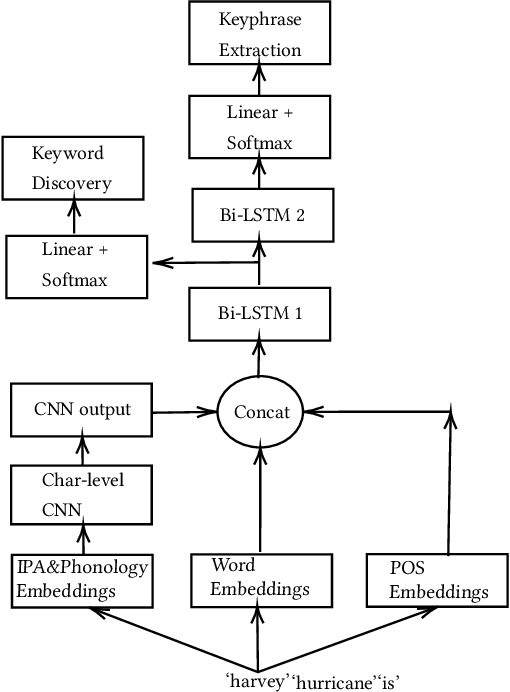

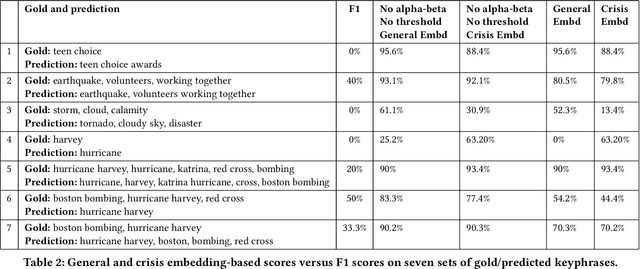

Abstract:While keyphrase extraction has received considerable attention in recent years, relatively few studies exist on extracting keyphrases from social media platforms such as Twitter, and even fewer for extracting disaster-related keyphrases from such sources. During a disaster, keyphrases can be extremely useful for filtering relevant tweets that can enhance situational awareness. Previously, joint training of two different layers of a stacked Recurrent Neural Network for keyword discovery and keyphrase extraction had been shown to be effective in extracting keyphrases from general Twitter data. We improve the model's performance on both general Twitter data and disaster-related Twitter data by incorporating contextual word embeddings, POS-tags, phonetics, and phonological features. Moreover, we discuss the shortcomings of the often used F1-measure for evaluating the quality of predicted keyphrases with respect to the ground truth annotations. Instead of the F1-measure, we propose the use of embedding-based metrics to better capture the correctness of the predicted keyphrases. In addition, we also present a novel extension of an embedding-based metric. The extension allows one to better control the penalty for the difference in the number of ground-truth and predicted keyphrases
* 12 pages, 7 figures
Localizing and Quantifying Damage in Social Media Images
Jun 09, 2018
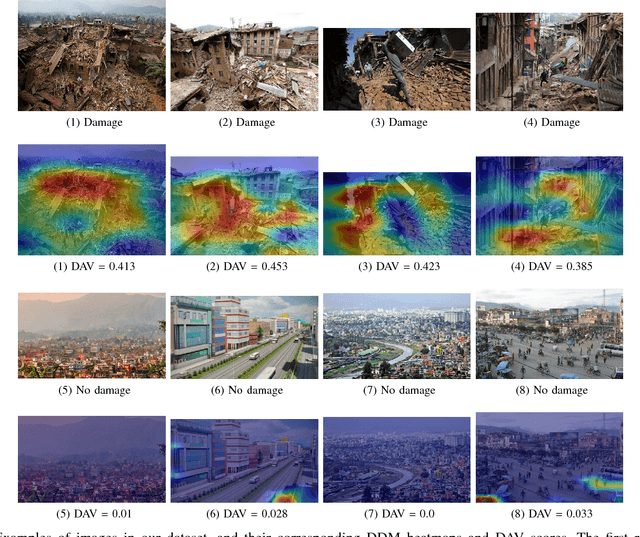
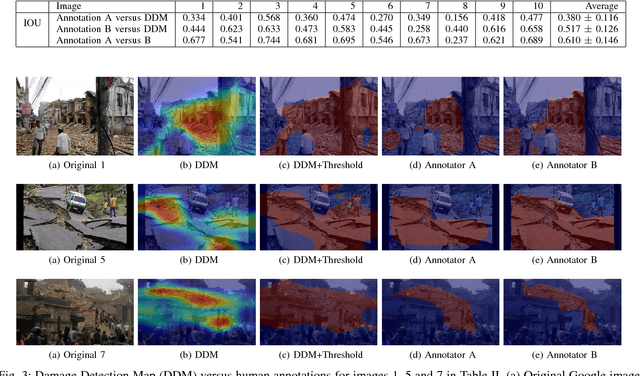

Abstract:Traditional post-disaster assessment of damage heavily relies on expensive GIS data, especially remote sensing image data. In recent years, social media has become a rich source of disaster information that may be useful in assessing damage at a lower cost. Such information includes text (e.g., tweets) or images posted by eyewitnesses of a disaster. Most of the existing research explores the use of text in identifying situational awareness information useful for disaster response teams. The use of social media images to assess disaster damage is limited. In this paper, we propose a novel approach, based on convolutional neural networks and class activation maps, to locate damage in a disaster image and to quantify the degree of the damage. Our proposed approach enables the use of social network images for post-disaster damage assessment and provides an inexpensive and feasible alternative to the more expensive GIS approach.
KSU KDD: Word Sense Induction by Clustering in Topic Space
Feb 28, 2013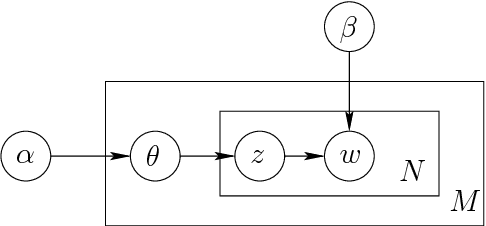

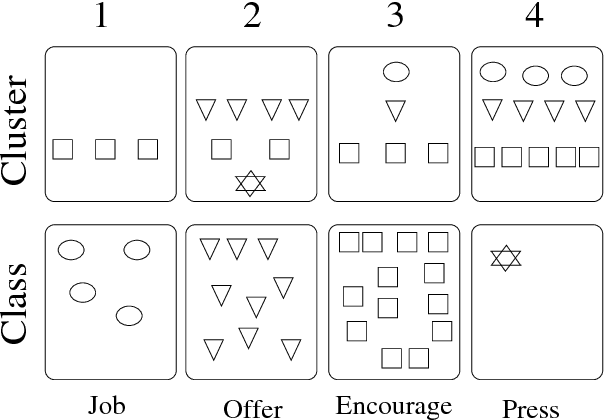

Abstract:We describe our language-independent unsupervised word sense induction system. This system only uses topic features to cluster different word senses in their global context topic space. Using unlabeled data, this system trains a latent Dirichlet allocation (LDA) topic model then uses it to infer the topics distribution of the test instances. By clustering these topics distributions in their topic space we cluster them into different senses. Our hypothesis is that closeness in topic space reflects similarity between different word senses. This system participated in SemEval-2 word sense induction and disambiguation task and achieved the second highest V-measure score among all other systems.
 Add to Chrome
Add to Chrome Add to Firefox
Add to Firefox Add to Edge
Add to Edge